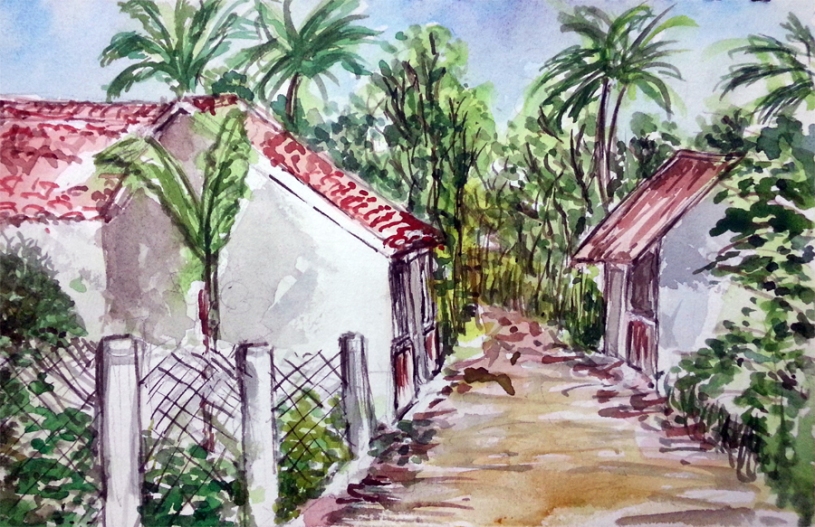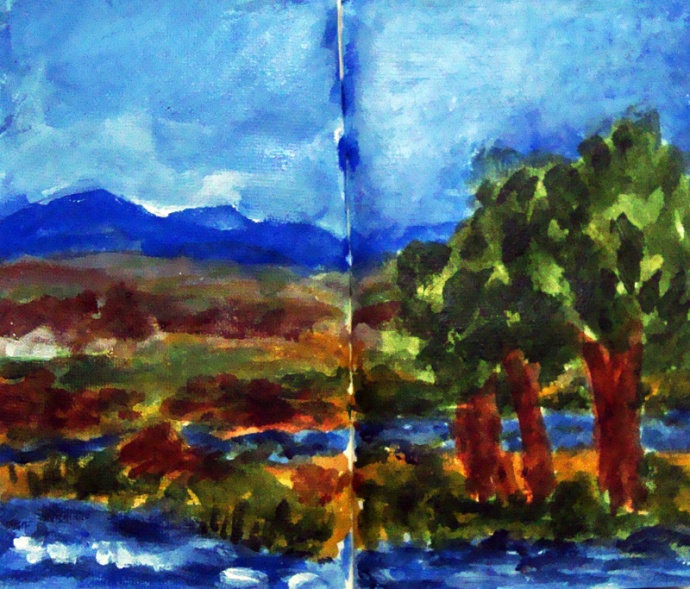My mother’s friend lives in a small hamlet, some forty kilometres from the historical town of Kumbakonam. It is a quiet village tucked between acres of green fields, fertile because of the tributaries of Kaveri river that crisscross this region.
This is a painting of the agraharam, a place where a particular community of people live. The agraharam is lined with houses on both sides of the mud road. The houses have red tiles for roof. A thinnai or a closed porch at the entrance leads to a courtyard surrounded by rooms . The house opens into a large backyard with a well and a rambling garden where different types of vegetables are grown. My mother’s friend grows brinjals, cluster beans, pumpkins, bitter gourds, snake gourds, tomatoes and chillies.There are lemon, mango, coconut and drumstick trees that help to fill the larder with food supplies.
At one end of the agraharam is the temple for Lord Vishnu and at the other end is the temple for Lord Shiva. The Shiva temple has a temple tank. Even during the severest summer the tank does not run dry, it remains filled with moss covered, jade coloured water. The chidren in the village take delight in swimming in the tank, the water bursts into sparkles of green light when the boys dive in from the tall walls.
Around the agraharam in the village there are about 30 houses where people from different communities live. Beyond these houses spread the fields. Every household in the village is involved in farming activities, they either own farmland, or work for wage in farmlands that belong to others.
I visited the village soon after the harvest of rice, the fields were ochre coloured waiting to be dug and got ready for the next crop.













![aros2012[1]](https://mauvesea.files.wordpress.com/2012/01/aros201212.jpg?w=690)

![aros2012[1]](https://mauvesea.files.wordpress.com/2012/01/aros20121.jpg?w=690)




